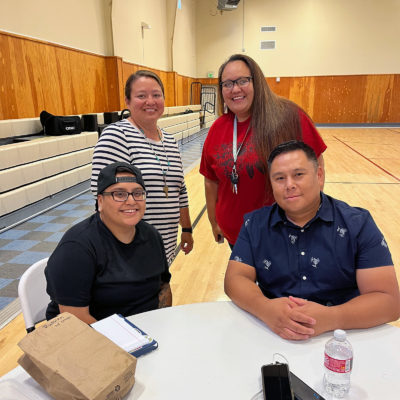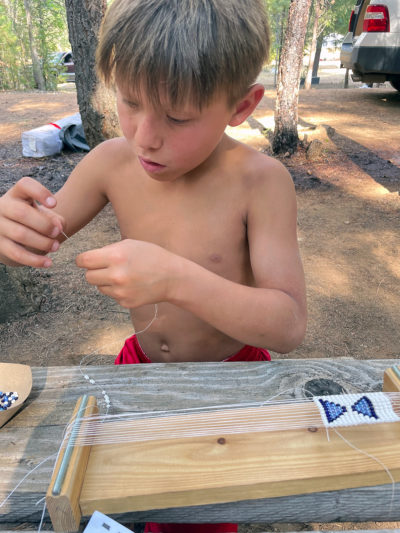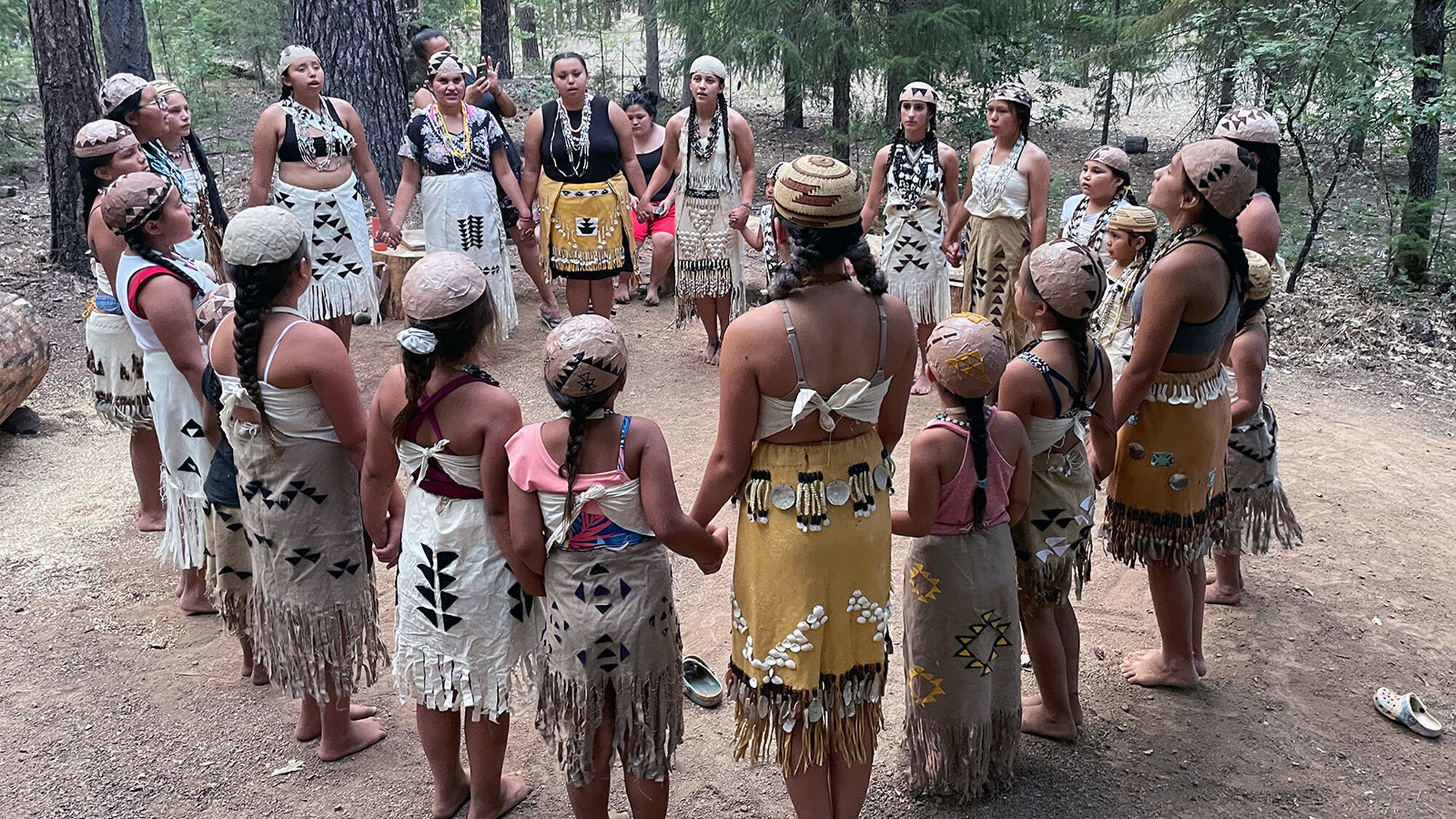By Erin Wilkey Oh
Nestled in the Klamath Mountains of rural Northern California, the Quartz Valley Indian Reservation (QVIR) consists of 200 acres of ranchland, farmland, mountain forests, and creeks. When QVIR was federally recognized in 1934, the Tribe included just 13 families. Now, with around 400 members, QVIR is still one of the smaller federally recognized tribes in California.
For the Building a More Perfect Union grant project, the Northern California Writing Project (NCWP) and QVIR partnered to increase the visibility and accessibility of the reservation’s history, culture, and language. Together, they updated the QVIR website, created teaching resources to bring more visibility to the reservation, and revitalized the QVIR's annual Culture Camp.
For many who live in Northern California, little is known about QVIR. Now, thanks to this collaboration, the history and culture of this small community is more accessible to a broader audience. Read on to learn more about the project.
Telling the Story of QVIR

The story of the Quartz Valley Indian Reservation has remained largely unknown to people outside of the community. At the outset of this project, those looking to learn more would not be able to find much online. QVIR's Wikipedia entry is only a few sentences long. The QVIR LinkedIn page provides a bit more information, but still tells little. And even the reservation's own website did not have a section on the history of the Tribe. So the team set out to revamp the QVIR website and give more visibility to the reservation's complex story.
Because QVIR and the NCWP wanted to ensure the project relied on Native knowledge and Native owned business, they contracted with Native web developer and owner of Obsidian Websites, Rocky Tano. Tano worked closely with QVIR members to revise the website and capture the information and stories they wanted to include.
On a visit to QVIR, Tano led a workshop for youth in the community to help them build storytelling and media production skills. Participants learned how to capture, edit, and produce photos and videos and how to use them on QVIR's new website and YouTube channel. The hope is that the community youth will continue to add to these story libraries and build a shared knowledge of QVIR over time.
The updated QVIR website has a new look and feel that showcases the beauty of the land and culture of QVIR through visual media. Updates also include a more streamlined navigation and new sections that feature the history of QVIR, teaching materials for classrooms, and the importance of the Tribe's annual Culture Camp. As of the time of this article, the new QVIR site had not been published, but Tano expects it to launch near the end of 2023.
QVIR in Schools
The second component of the Building a More Perfect Union partnership was to create learning resources that would build young people's knowledge about the history, culture, and traditions of the Quartz Valley Indian Reservation. The Northern California Writing Project organized a team of elementary and high school teachers to develop a set of four lesson plans that use the updated QVIR website as a learning tool.
NCWP Director Kyra Mello described the lessons: "The lesson plans cover a range of topics and teaching strategies, including asking students to think about culture, how people develop and maintain knowledge and traditions, a website scavenger hunt, and how to use the website as a resource and text."
In one lesson, students connect with QVIR members and correspond with them via email. In another, students learn about the Land Back Movement and research which Native land they live on. And in another, they analyze videos on the QVIR YouTube channel to reflect on the traditions and skills the youth of QVIR learn at their annual Culture Camp.
The lesson plans are included in a new "Teacher Resources" section on the updated site. Once the site is live, NCWP will also share the resources with regional educators on the NCWP website, on social media channels, and in teacher workshops.
Culture Camp

At QVIR, Culture Camp is an annual summer program during which community members share cultural knowledge, skills, and history with younger generations. The week-long camp provides cultural teaching and activities in traditional dance, basket making, the making of dance regalia, and drum making. It's a chance for youth, family members of all ages, and community members to learn more about the culture and traditions of the people of QVIR.
Culture Camp had not been offered regularly since 2016 and was put on hold indefinitely during the pandemic. Through this partnership and the successful fundraising of the Building a More Perfect Union grant, QVIR was able to revive Culture Camp and ran a successful program in July 2022.
QVIR Representative, Kayla Super explains, "With the support, we were able to purchase new equipment for our Culture Camp kitchen … to have a more streamlined kitchen making it easier for our young ladies to participate more in cultural teaching activities and less in the kitchen. QVIR was also able to purchase some of our beading and craft materials … [and so] we were able to support more youth at once."
Culture Camp is the primary education tool used by QVIR to share their culture, history, and stories within the community as well as with the greater population. In addition to the new website and educational lesson plans for teachers, the revival of QVIR's Culture Camp is helping ensure the Tribe's elders are honored and their children are learning the traditions and history of their people.

